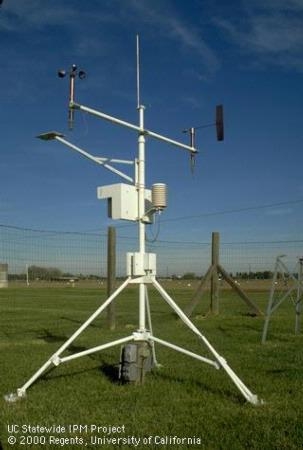https://ascelibrary.org/doi/full/10.1061/(ASCE)IR.1943-4774.0001632
Evaluation of Forecast Reference Evapotranspiration for Different Microclimate Regions
in California to Enable Prospective Irrigation Scheduling
Ghaieth Ben Hamouda, Ph.D.; Daniele Zaccaria, Ph.D.; Khaled Bali, Ph.D.; Richard L. Snyder, Ph.D.
Abstract
In California, daily crop evapotranspirationis commonly estimated using near-real-time, standardized reference evapotranspiration (ET)calculated from ground-based meteorological data and crop coefficient (Kc) values that adjust for the difference between ETo and ETc. However, using ETo calculated from forecast rather than near-real-time meteorological data provides more timely information to growers, farm managers, urban water users, irrigation practitioners, and water purveyors to anticipate water demand for the upcoming days. This is particularly important for water allocation and delivery planning and for irrigation scheduling decisions. Forecast ETo is also relevant for scientific research for developing methods and tools enabling more resource-efficient water use for agricultural production and urban landscapes. Verifying the reliability of ETo forecast models for various climatic conditions is crucial for promoting the broad adoption and use of ETo predictions for weather-based adaptive water management and prospective irrigation scheduling. The US National Weather Service (NWS) has released a product called forecast reference evapotranspiration (FRET) that provides ETo forecasts at a 2.5-km grid resolution for the entire continental US. In this study, comparisons were made between ETo forecasts from FRET and observed ETo values from the California Irrigation Management Information System (CIMIS) for a total of 78 days during the peak irrigation water demand period of 2019, which corresponded to the midseason period for major crops. FRET ETo forecasts and CIMIS ETo observations (calculated from measured weather parameters) were compared for 15 CIMIS station locations to represent a variety of weather conditions of some major agricultural production and urban areas in California. Air temperature, dew point temperature, wind speed, and solar radiation data were collected from NWS and CIMIS and analyzed to assess the accuracy of predicted weather variables and FRET ETo forecasts. The FRET data consisted of 1, 3, 5, and 7-day forecasts of weather parameters and calculated ETo values; these were compared with the corresponding observed daily weather and ETo data from CIMIS in order to statistically evaluate FRET performance. The comparison among forecast and measured weather variables revealed a good match for maximum air temperature (R2 between 0.98 and 1.00), minimum air temperature (R2>0.91), dew point temperature (R2 between 0.7 and 1.00), and wind speed (R2 between 0.66 and 0.99); less accurate results were obtained for solar radiation (R2 between 0.21 and 0.87). The analysis also showed a good correlation between FRET ETo forecast data and observed CIMIS ETo data (R2 between 0.93 and 1.00 and root mean square error (RMSE) was less than 1 mm⋅day−1) for the majority of the selected stations, with some differences that were likely due to the climatic conditions of specific locations. This suggests that FRET ETo forecasts provide reliable information for predicting near-future water demand and improving irrigation water management in California. The comparisons showed a good match for most of the 15 CIMIS stations, and the FRET model may potentially provide accurate ETo forecasts in similar semiarid and subhumid areas elsewhere. Weekly irrigation schedule examples are provided in the Appendix to illustrate the use of FRET ETo forecasts in combination with site-specific information on soil hydraulic properties and irrigation system performance for prospective irrigation scheduling of some specialty crops and urban landscapes. The information provided in this article can help improve the water management efficiency of high-frequency agricultural irrigation systems and urban sprinkler systems in California and other locations with similar climates. It also offers a less expensive method to obtain ETo data in countries that do not have ETo station networks, because it offers an alternative to installing and maintaining ETo stations in agricultural and urban areas where it is difficult to find acceptable surfaces for developing reliable ETo information.
